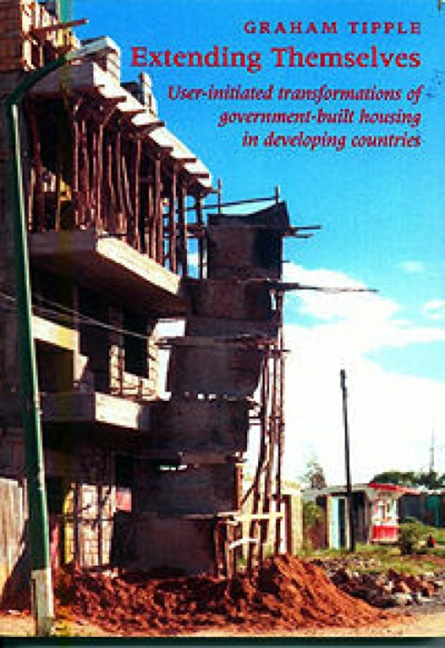 Extending Themselves
Extending Themselves Book contents
- Frontmatter
- Contents
- Acknowledgements
- 1 Introduction
- 2 The housing squeeze
- 3 More than just a dwelling
- 4 The financial element: transformation as an investment
- 5 Sustainability issues
- 6 The transformation process
- 7 The case for transformations
- 8 Policies for enabling transformations
- Appendix 1 Transformations in Bangladesh
- Appendix 2 Transformations in Egypt
- Appendix 3 Transformations in Ghana
- Appendix 4 Transformations in Zimbabwe
- Appendix 5 An assessment of the decision to transform
- References
- Index
6 - The transformation process
- Frontmatter
- Contents
- Acknowledgements
- 1 Introduction
- 2 The housing squeeze
- 3 More than just a dwelling
- 4 The financial element: transformation as an investment
- 5 Sustainability issues
- 6 The transformation process
- 7 The case for transformations
- 8 Policies for enabling transformations
- Appendix 1 Transformations in Bangladesh
- Appendix 2 Transformations in Egypt
- Appendix 3 Transformations in Ghana
- Appendix 4 Transformations in Zimbabwe
- Appendix 5 An assessment of the decision to transform
- References
- Index
Summary
Informal settlements clinging to existing buildings
Transformation of government-built housing can be likened to attaching informal development to the most formally developed areas found in many cities. In the past, we have become used to informal housing supply taking place in particular areas, typically on unused land within the urban built-up area (railway reservations, land assigned to future government use, steep slopes, land liable to flooding, etc.) or on its periphery. These settlements often present acute discomfiture to land-use planners because they create obstacles to smooth implementation of planned development, e.g. the Klong Toey settlement and port facilities in Bangkok (Durande-Lasserve and Pajoni, 1993), or put their residents in potentially serious danger, e.g. from mud slides during heavy rain. As they occur mainly on public land, the removal of development puts the authorities in the awkward position of being the oppressors of the poor when they would prefer to be seen as the protectors of the poor and oppressed.
Transformations, on the other hand, occur close to existing dwellings and often on the private land attached to them. The informal ‘settlement’ takes place within the interstices of the current formal settlement on land that is already serviced, integrated within the city fabric, equipped with social and other infrastructure, and suitable for residential occupation. While interstitial development has many of the inconvenient features of the conventional informal settlement, it does not tend to obstruct major future developments as many informal settlements do. Instead the development which may be prejudiced is more local and likely to affect only the close neighbours. It may be fairly serious in its local ramifications, e.g. blocking access for fire appliances or building over service lines, but it is unlikely to affect meso- or macro-scale projects in the city.
The construction process
Extensions to existing houses are ideally suited to self-help through family labour if there is a propensity to build this way in the local culture. The work is close by so any spare hour can be used to add to the building. Thus, the potential exists to convert surplus time into capital value very efficiently (Turner, 1976) and we have previously referred to the phenomenon under study as ‘self-help transformation’ (Tipple, 1991a). However, as in many sites and services schemes (Laquian, 1983), few householders are involved in active construction themselves; there is little ‘sweat equity’.
- Type
- Chapter
- Information
- Extending ThemselvesUser Initiated Transformations of Government-built Housing in Developing Countries, pp. 103 - 120Publisher: Liverpool University PressPrint publication year: 2000


